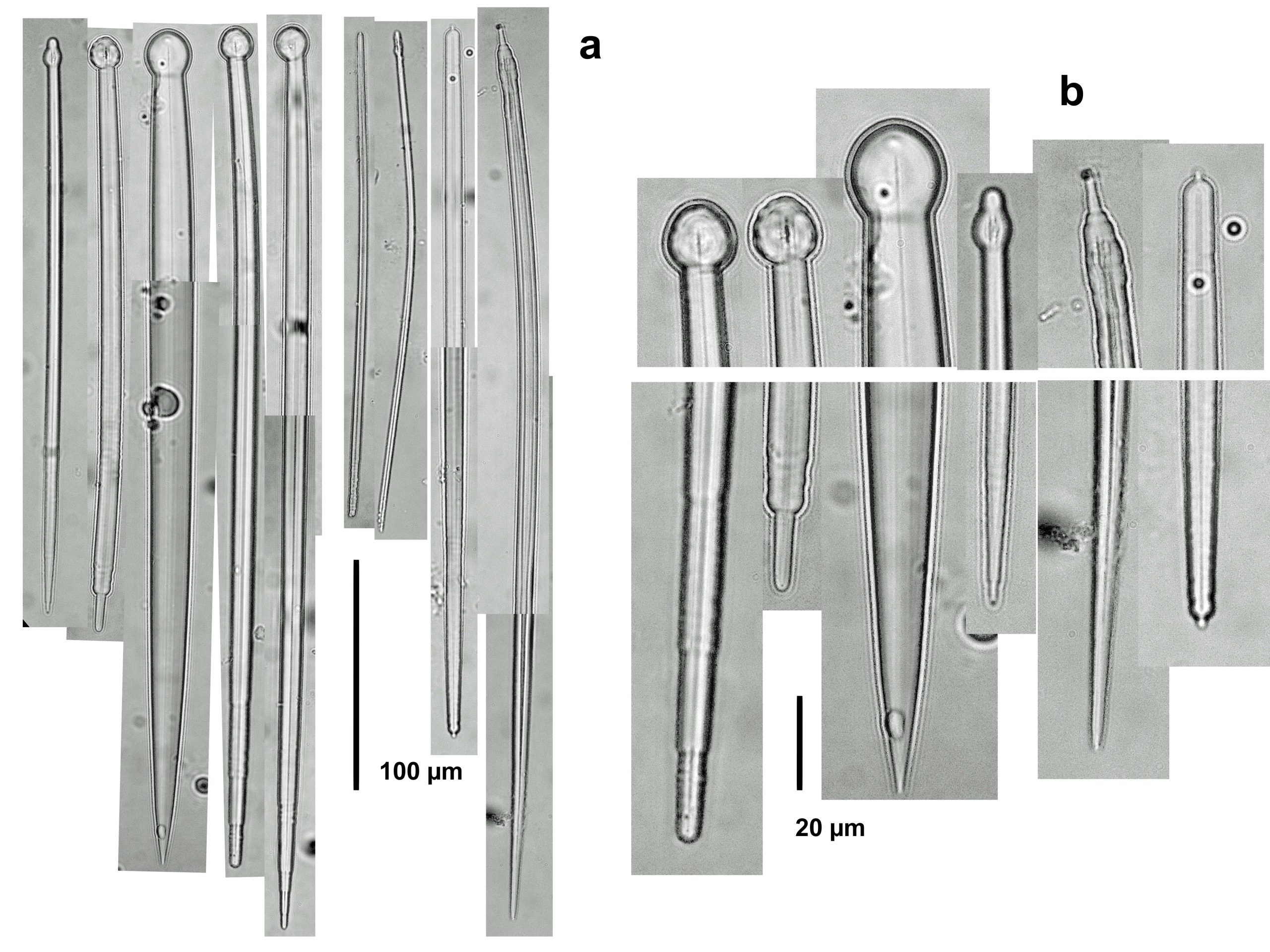Observed Characteristics:
Color:
- orange
Morphology:
- papillated
Consistency:
- soft
Sample Locations:
- Bahamas
Cliona aff. janitrix
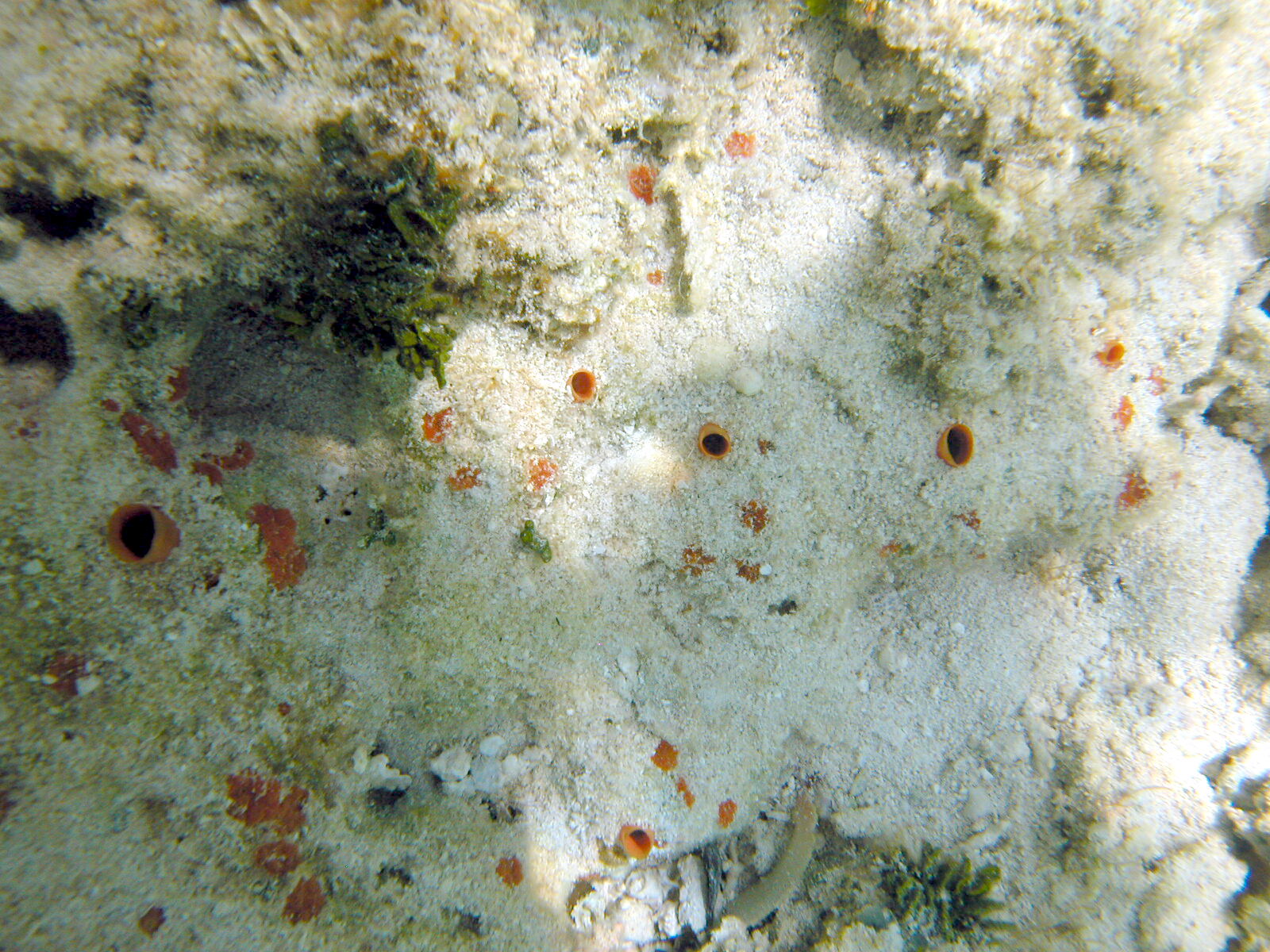
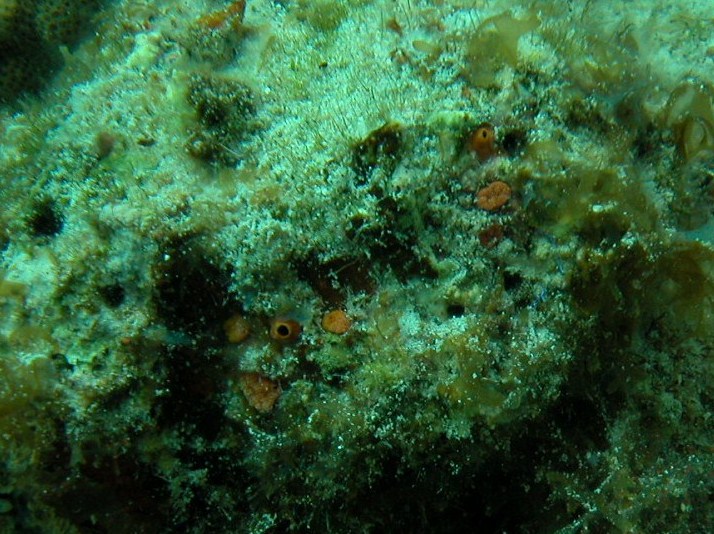
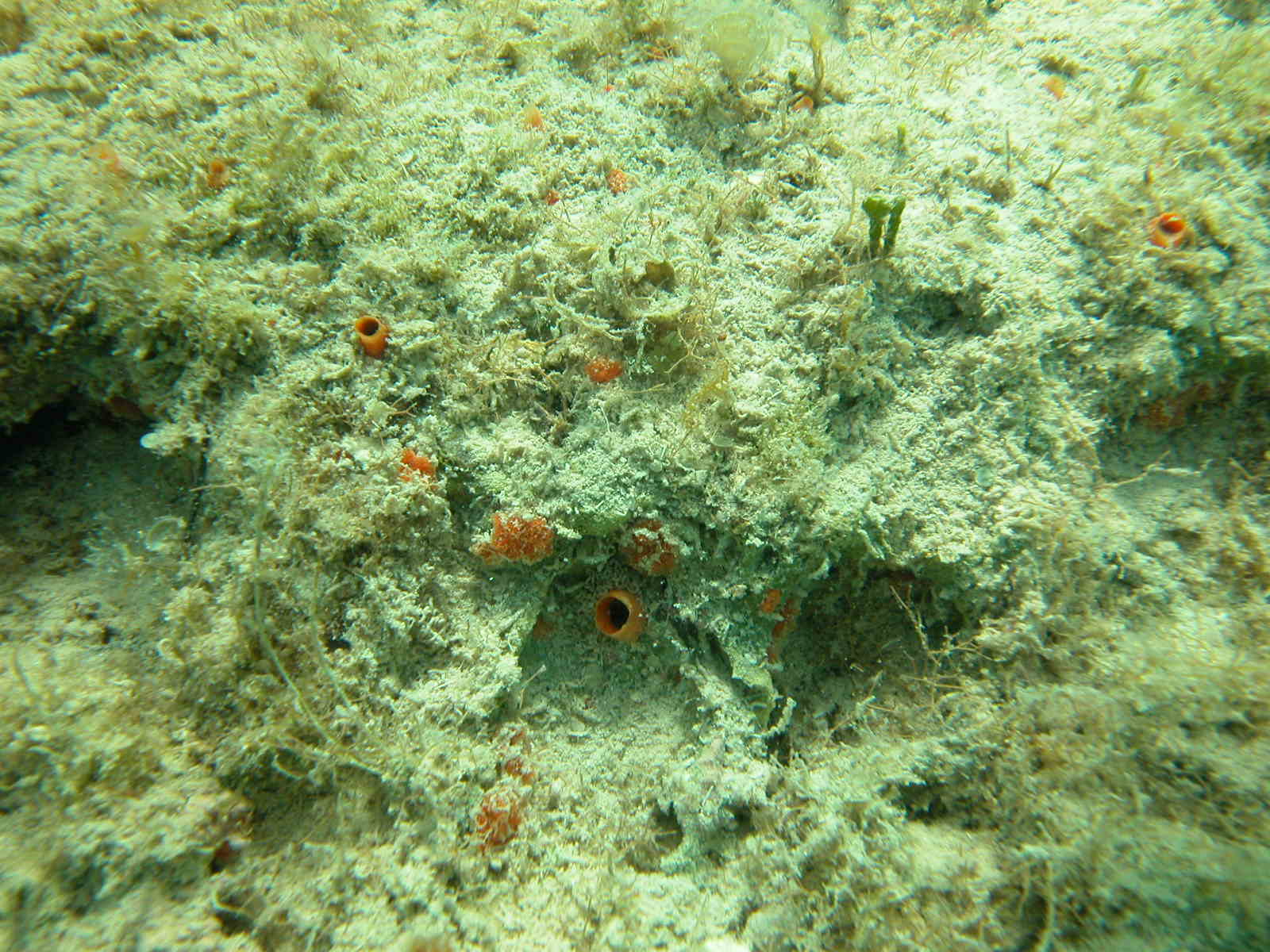
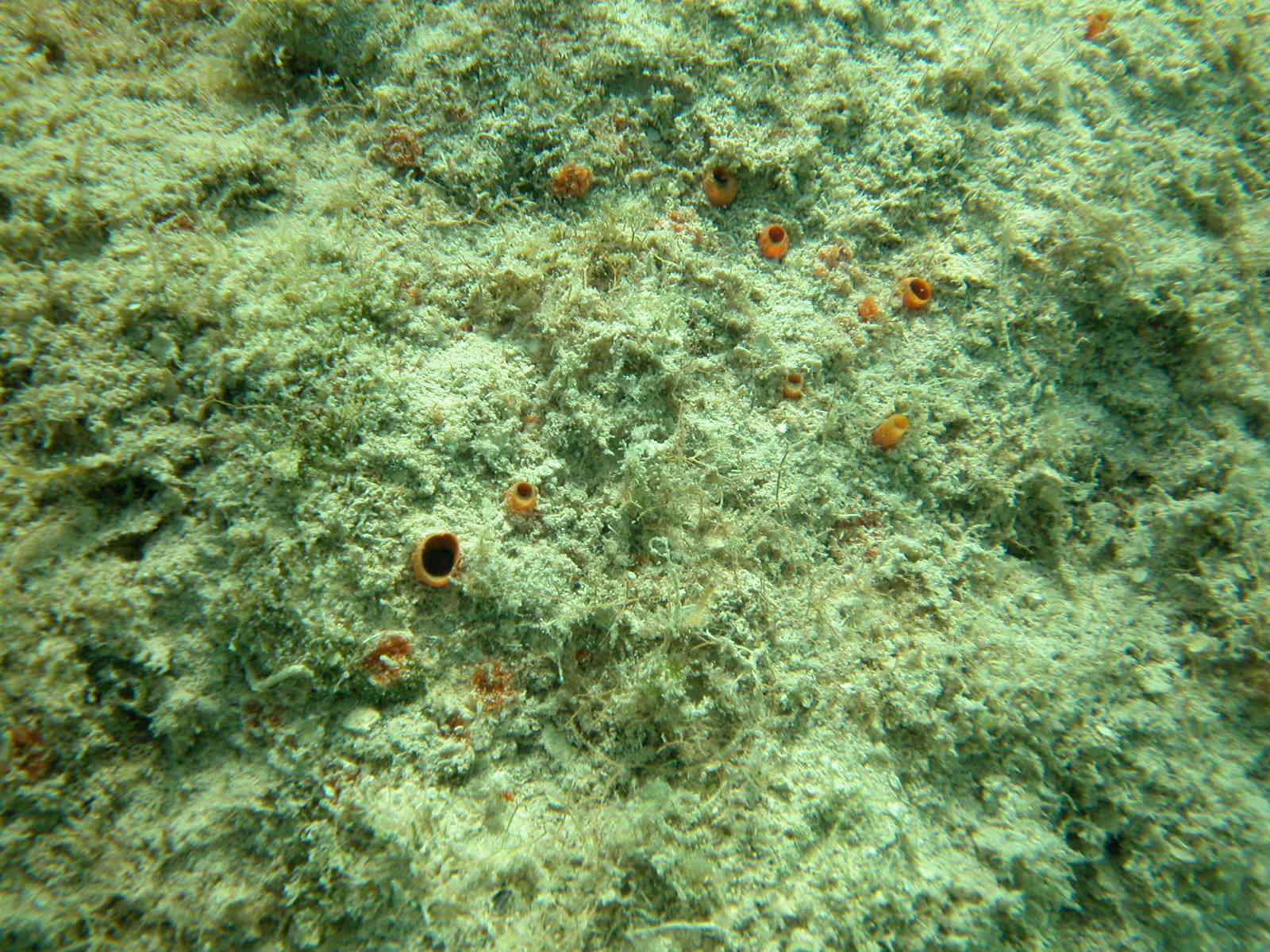
Description: Excavating, papillated sponge composed of separate oscular papillae surrounded by inhalant papillae, growing on exposed dead corals substratum or on bottom lagoon limestone, both heavily covered with algae and sediments. Papillae reach up to 5-10 mm in maximum diameter. Color orange. Consistency of epilythic portions soft. Skeleton of papillar tissues as palisades of spicules; deeper skeleton with many spicules in confusion. Megasclere spicules are slender to stout tylostyles with many stylote or strongyloxote modifications, 260-475 µm long by 3-14.6 µm wide; heads round and large, sometimes subterminal or deformed, 5-18 µm in diameter and 7.5-15.5 µm long; ends acute or mammiform, abruptly stair stepped; modifications include a few smooth styles or a rugose slight head, or a subterminal engrossing, or strongyloxoid spicules with both ends mammiform and asymmetric. No microscleres.
Notes: The identification of this species is tentative, C. janitrix sensu Pang, 1973 from Jamaica being the closest, owing to the irregular shape of the ends of the tylostyles and the presence of oxeote modifications with ends showing one or more abrupt reductions in diameter. However, the color of Jamaican specimens is dull yellow, contrasting with the orange from Bahamian specimens analyzed by us. Also, tylostyles are smaller and thinner in Jamaica, 134-221 µm long and 7.8-1 1.4 µm wide (Pang, 1973). The original C. janitrix is from the Mediterranean, so that even Pang (1973) record should be revised for the need of a new name. Specimens growing in sediment-laden lagoonal hard bottoms looked characteristically different to other Clionaids, but one specimen found dwelling in exposed coralline substratum was initially confused with papillated C. delitrix Pang, 1973, also pictured here, and only through the examination of spicules its identity was revealed.
Author Reference: Topsent, 1932
Link: World Porifera Database
